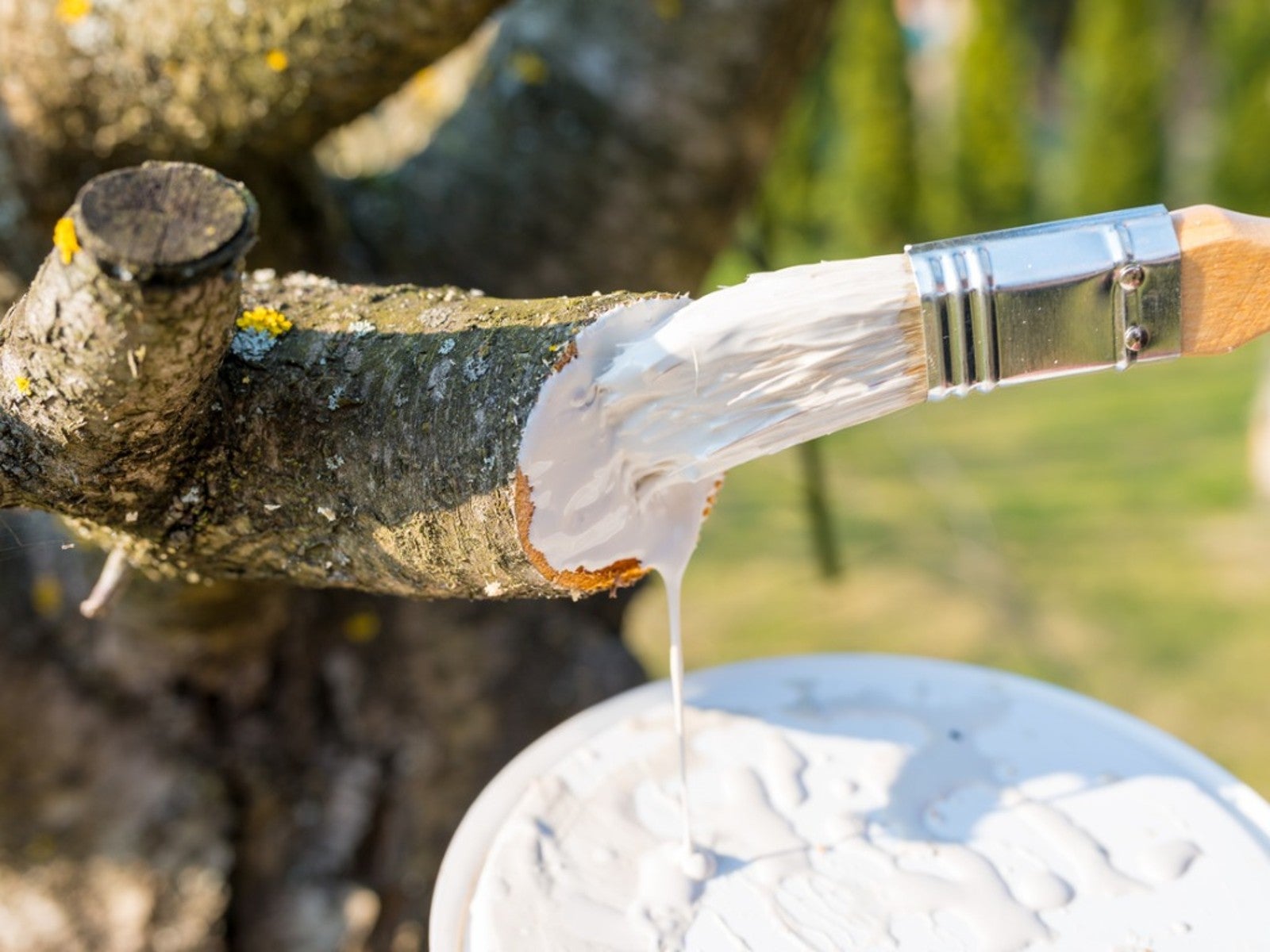Should You Seal A Tree Wound?


A pruning sealant is a product touted to assist trees to heal from pruning wounds. There is something comforting about smoothing something viscous over the cut section of a branch or trunk, but does it help? Generally, the answer is no, although there is an exception for using pruning paint for oak trees.
Before you use any tree wound sealer, it pays to find out what the experts have to say on the topic. Read on for an overview.
The Idea Behind a Tree Pruning Sealer
A tree wound sealer is a commercially available product that is applied to the cut section of a recently pruned tree or shrub. In many ways, the idea of applying a tree wound dressing makes sense to a gardener, as a kind of Band-Aid for the plant. But it is usually a bad idea.
When you trim or cut living wood from a tree, you always reduce its potential to photosynthesize sunlight and oxygen into energy. Pruning also creates a wound in the woody plant that requires energy to heal.
Yet the process of pruning is often necessary to form a tree’s branch structure or remove damaged or diseased wood. Since pruning cuts create openings in the wood for insect and disease to enter, it feels helpful to apply a tree wound dressing or sealant after pruning.
Trees Heal Their Own Wounds
Woody plants have been on the planet as long as we have and have developed their own natural defenses. While we think of a tree as “healing” from a wound, a woody plant actually doesn’t heal, but isolates the damage by forming a type of wood over the wound that repels harmful organisms. This is termed compartmentalization.
How does this work? After a tree is pruned, it grows callus tissue at the edges of the pruning wound that moves slowly toward the center of the exposed area. Assuming that the cuts were made carefully and correctly, the new wood slowly expands to cover the entire wound.
Sign up for the Gardening Know How newsletter today and receive a free copy of our e-book "How to Grow Delicious Tomatoes".
This natural process makes pruning sealants totally unnecessary and, in fact, damaging to the tree. Covering wounds with tree wound sealer prevents the oxidative processes from progressing naturally, which slows callus formation. Think of the promotion of these tree sealants as an advertising strategy rather than something to assist the trees.
The only time that painting a tree pruning wound is helpful is when an oak tree must be pruned in spring or summer. Generally, this is to be avoided since oak wilt can enter through the wounds. Painting over the wound with latex house paint is recommended. Winter pruning oak wounds do not require painting.
Proper Pruning Techniques
Good tree pruning techniques work to assist a tree’s natural compartmentalization process. Start by using sharp, sanitized pruning tools and making clean, smooth cuts. Avoid leaving branch stubs other than the small branch collars of wood at the bases of the branches.
You may have heard of the “three-cut” method suggested by experts to remove larger branches. The first cut is a slight cut made on the lower side of the branch a distance above the location of the final cut. The second cut is on the top side of the branch above the undercut. It removes the branch weight in order to prevent stripping of the bark. Make the final cut just outside the branch collar.

Teo Spengler is a master gardener and a docent at the San Francisco Botanical Garden, where she hosts public tours. She has studied horticulture and written about nature, trees, plants, and gardening for more than two decades, following a career as an attorney and legal writer. Her extended family includes some 30 houseplants and hundreds of outdoor plants, including 250 trees, which are her main passion. Spengler currently splits her life between San Francisco and the French Basque Country, though she was raised in Alaska, giving her experience of gardening in a range of climates.